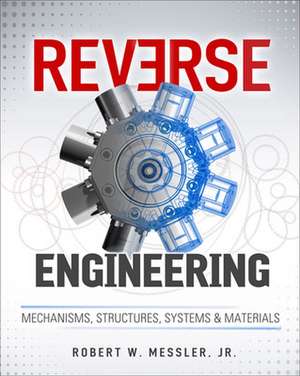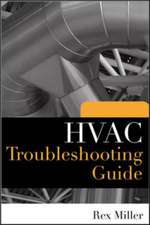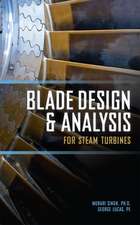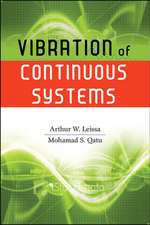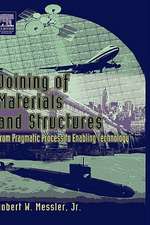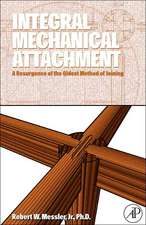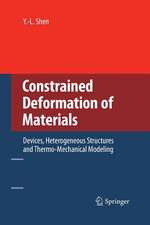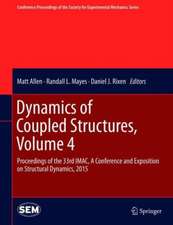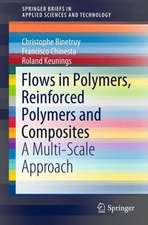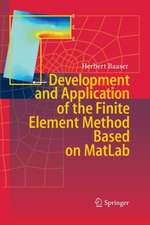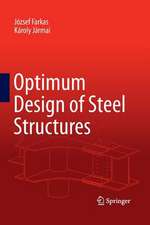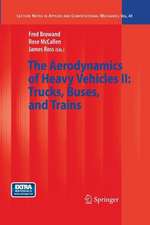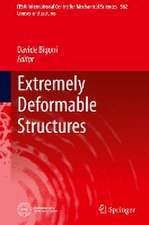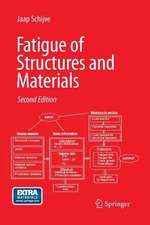Reverse Engineering: Mechanisms, Structures, Systems & Materials
Autor Robert Messleren Limba Engleză Hardback – 16 ian 2014
This unique book examines the often underappreciated and occasionally maligned technique of reverse engineering. More than a shortcut for the lazy or unimaginative to reproduce an artless copy of an existing creation, reverse engineering is an essential brick – if not a keystone – in the pathway to a society’s technological advancement.
Written by an engineer who began teaching after years in industry, Reverse Engineering reviews this meticulous analytical process with a breadth and depth as never before. Find out how to:
- Learn by “mechanical dissection”
- Deduce the role, purpose, and functionality of a designed entity
- Identify materials-of-construction and methods-of-manufacture by observation alone
- Assess the suitability of a design to purpose from form and fit
Coverage includes:
- Methods of product teardown
- Failure analysis and forensic engineering
- Deducing or inferring role, purpose, and functionality during reverse engineering
- The Antikythera mechanism
- Identifying materials-of-construction
- Inferring methods-of-manufacture or -construction
- Construction of Khufu’s pyramid
- Assessing design suitability
- Value and production engineering
- Reverse engineering of materials and substances
- Reverse engineering of broken, worn, or obsolete parts for remanufacture
- The law and the ethics of reverse engineering
Preț: 656.86 lei
Preț vechi: 962.37 lei
-32% Nou
125.71€ • 130.75$ • 103.78£
Carte tipărită la comandă
Livrare economică 11-22 aprilie
Specificații
ISBN-10: 0071825169
Pagini: 448
Dimensiuni: 224 x 241 x 28 mm
Greutate: 0.36 kg
Editura: McGraw Hill Education
Colecția McGraw-Hill
Locul publicării:United States
Cuprins
Ch 1. Introduction
Ch 2. Basic Concepts for the Technique
Ch 3. History of Reverse Engineering
Ch 4. The Teardown Process (or Mechanical Dissection)
Ch 5. Methods of Product Teardown
Ch 6. Failure Analysis and Forensic Engineering
Ch 7. Deducing or Inferring Role, Purpose, and Functionality during Reverse Engineering
Ch 8. The Antikythera Mechanism
Ch 9. Identifying ConstructionMaterials
Ch 10. Inferring Methods of Manufacture or Construction
Ch 11. Construction of Khufu's Pyramids: Mankind's Greatest Engineering Creation
Ch 12. Assessing Design Suitability
Ch 13. Bringing It All Together with Illustrative Examples
Ch 14. Value and Production Engineering
Ch 15. Reverse Engineering of Materials and Substances
Ch 16. Reverse Engineering Obsolete, Broken, or Worn Parts
Ch 17. The Law and Ethics of Reverse Engineering
Ch 18. The End of a Book, the Beginning of a New Story: Closing Thoughts
Notă biografică
Robert W. Messler, Jr., Ph.D., FASM, FAWS, is Emeritus Professor of Materials Science and Engineering at Rensselaer Polytechnic Institute. He spent 16 years in industry, 11 years at Grumman Aerospace and five years at Eutectic-Castolin, and then returned to Rensselaer where he earned his degrees to serve as Technical Director and Associate Director of the Center for Manufacturing Productivity. Dr. Messler later became tenured as Professor and was appointed as Associate Dean for Academic and Student Affairs. He is the author of six books, including Engineering Problem-Solving 101 (McGraw-Hill Professional, 2013). Dr. Messler has also authored more than 140 papers in diverse areas of materials processing, joining, design, manufacturing, and engineering education.
Descriere
A comprehensive look at reverse engineering as a legitimate learning, design, and troubleshooting tool
This unique book examines the often underappreciated and occasionally maligned technique of reverse engineering. More than a shortcut for the lazy or unimaginative to reproduce an artless copy of an existing creation, reverse engineering is an essential brick – if not a keystone – in the pathway to a society’s technological advancement.
Written by an engineer who began teaching after years in industry, Reverse Engineering reviews this meticulous analytical process with a breadth and depth as never before. Find out how to:
- Learn by “mechanical dissection”
- Deduce the role, purpose, and functionality of a designed entity
- Identify materials-of-construction and methods-of-manufacture by observation alone
- Assess the suitability of a design to purpose from form and fit
The rich heritage of engineering breakthroughs enabled by reverse engineering is also discussed. This is not a dry textbook. It is the engaging and enlightening account of the journey of engineering from the astounding creations of ancient cultures to what, with the aid of reverse engineering, promises to be an even more astounding future!
Coverage includes:
- Methods of product teardown
- Failure analysis and forensic engineering
- Deducing or inferring role, purpose, and functionality during reverse engineering
- The Antikythera mechanism
- Identifying materials-of-construction
- Inferring methods-of-manufacture or -construction
- Construction of Khufu’s pyramid
- Assessing design suitability
- Value and production engineering
- Reverse engineering of materials and substances
- Reverse engineering of broken, worn, or obsolete parts for remanufacture
- The law and the ethics of reverse engineering
